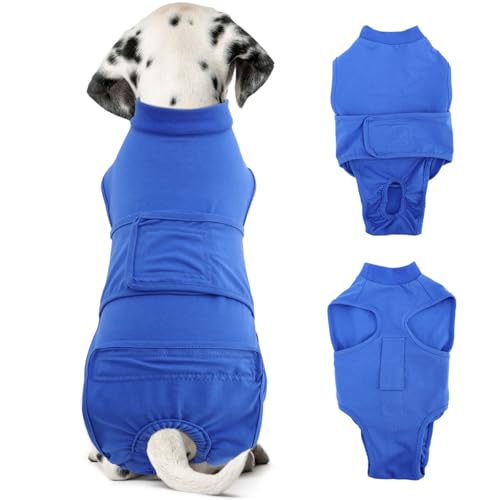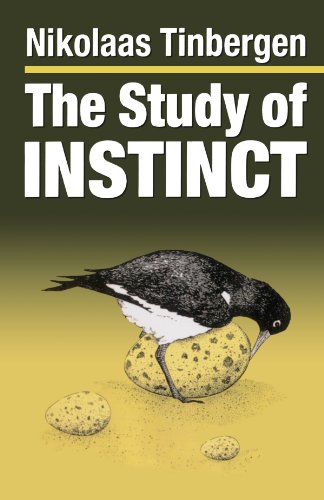
Begin with a slicker brush. This tool is perfect for loosening knots without pulling too hard on the skin. Gently work through the tangled areas, starting from the tips and moving towards the roots. This method minimises discomfort for your furry friend.
If the tangles are stubborn, a detangling spray can be your ally. Look for natural products that are safe for pets, and apply a small amount directly to the affected regions. Allow it to sit for a few minutes before brushing; the product will soften the fur, making it easier to separate the strands.
For particularly difficult spots, consider using your fingers. Carefully separate the matted sections, working them apart with your fingertips. This hands-on approach reduces the risk of pulling and allows you to gauge how much tension your pet can handle.
Regular grooming is key. Establish a routine to prevent future knots from forming. Aim for at least once a week, using tools suited to your dog’s coat type. Consistency is your best defence against those pesky tangles.
Lastly, reward your companion with treats and praise throughout the grooming process. This positive reinforcement will make future grooming sessions more enjoyable for both of you.
Techniques for Removing Tangles from Canine Coats
Begin with a high-quality detangling spray, which can soften the fur and make it easier to work through knots. Apply it generously to the affected areas and let it sit for a few minutes. This will help to loosen the tight fibres. Use a wide-toothed comb to gently work through the tangles, starting from the ends and gradually moving up towards the skin. This method reduces breakage and discomfort.
Tools for Success
A slicker brush is invaluable for dealing with stubborn clumps. Its fine bristles can penetrate thick fur without pulling too hard. After combing, follow up with a pin brush to smooth the coat and remove any loose strands. Regular brushing is key to preventing future issues, so make it a part of your routine.
Health Considerations
Keep an eye on your pet’s diet as well; a healthy coat often starts from within. If you notice your furry friend struggling with skin or coat issues, consider exploring the best food to give dogs when they are sick. Proper nutrition plays a significant role in maintaining a beautiful and manageable coat.
Choosing the Right Tools for De-Matting
The right tools can make a significant difference in tackling those stubborn tangles. Start with a good-quality dematting comb; look for one with sharp blades on the edges to cut through knots without damaging the undercoat. A wide-tooth comb is also handy for loosening larger clumps before working with finer tools.
Another option is a slicker brush, which effectively removes loose debris while detangling. Choose one with flexible bristles to avoid irritating the skin. For particularly dense or matted sections, a dematting rake can be invaluable. Its dual-row design helps in breaking up tough knots.
Here’s a quick reference table to help you choose the right tool:
| Tool | Best For |
|---|---|
| Dematting Comb | Breaking through tough tangles |
| Slicker Brush | Removing loose fur and minor mats |
| Dematting Rake | Heavy-duty detangling for thick coats |
| Wide-Tooth Comb | Loosening larger knots |
Additionally, consider using a detangling spray. It can make the process smoother, allowing the tools to glide through without pulling too much. Always remember to work gently, as tugging can cause discomfort. With the right equipment and some patience, you’ll notice a significant improvement in your pet’s coat.
Step-by-Step Techniques for Safe De-Matting
Begin with a calm environment. Ensure your furry friend is relaxed. A quiet room with minimal distractions works wonders. Consider using treats as positive reinforcement during the process.
First, gently separate the clumps with your fingers. This helps to loosen the tight knots. Be patient; rushing can cause discomfort. If the tangle is severe, don’t force it. Take your time to work through it.
Next, apply a de-matting spray or conditioner specifically designed for this purpose. This will help to soften the tangled fur, making it easier to manage. Spray lightly and allow it to sit for a minute to penetrate the strands.
Use a wide-toothed comb to carefully tease apart the clumps. Start at the tips and work your way up to the roots. This method reduces stress on the skin and prevents pulling. If you encounter resistance, stop and address that section again with your fingers or a little more conditioner.
For more stubborn areas, a de-matting tool can be beneficial. These are designed with sharp blades to cut through tough knots without damaging the surrounding coat. Use them sparingly and with caution. Always follow the natural direction of the fur to avoid irritation.
Once the tangles are removed, give your companion a thorough brushing with a slicker brush. This step smooths the coat and removes any loose fur. Regular brushing will help prevent future knots from forming.
Finally, reward your pet with affection and treats. This positive reinforcement creates a pleasant association with grooming, making future sessions easier for both of you.
Preventing Future Mats in Canine Fur
Regular grooming is the cornerstone of maintaining a smooth coat for your furry companion. Establish a grooming schedule based on the breed and coat type. For instance, long-haired breeds may require daily attention, while short-haired varieties benefit from weekly brushing.
- Choose the Right Brush: Use a brush that suits your pet’s coat. For instance, slicker brushes work wonders on long, thick fur, while bristle brushes are great for shorter coats.
- Bathing Routine: Bathe your pet every 4-6 weeks with a quality shampoo formulated for their skin type. Clean fur is less likely to tangle.
- Conditioning Products: Incorporate a leave-in conditioner after bathing. This helps to keep the fur moisturised and reduces the likelihood of tangling.
Pay attention to specific areas prone to tangling, particularly behind the ears, under the legs, and around the collar. Regularly inspect these spots and gently brush them to prevent knots from forming.
- Nutrition Matters: A balanced diet rich in omega fatty acids contributes to healthy skin and fur, making it less prone to tangling.
- Exercise and Play: Regular activity reduces stress and promotes good health, which can positively affect the coat.
Lastly, consider professional grooming. Scheduling visits to a groomer every few months can provide a thorough clean and trim, helping to maintain a manageable coat length and preventing tangles from becoming an issue.
When to Seek Professional Grooming Assistance
If your furry friend has developed stubborn knots that regular brushing fails to resolve, it might be time to consider professional services. A groomer possesses the expertise and specialized tools to tackle intricate tangles safely. This is particularly crucial for breeds with dense or long fur, where DIY methods can lead to discomfort or injury.
Signs Indicating Professional Help is Needed
Look for signs such as persistent clumping, skin irritation, or if your pet becomes anxious during grooming sessions. If your attempts at de-tangling result in excessive pulling or your canine displays signs of distress, seeking a groomer is advisable. Additionally, if you encounter areas of matted fur that are too close to the skin, a professional can handle these sensitive spots with care.
Benefits of Professional Grooming
Besides effectively addressing tough knots, groomers can offer a thorough cleaning and maintenance routine that goes beyond brushing. They can spot skin issues, parasites, or other health concerns that may go unnoticed by an untrained eye. Regular visits not only help maintain a neat appearance but also contribute to your pet’s overall well-being. For instance, while waiting for your appointment, you might also want to check out resources like how to clean filter for fish tank, ensuring every part of your pet’s environment is well taken care of.
FAQ:
What are the best tools to remove mats from dog hair?
To effectively remove mats from dog hair, you can use a variety of tools. A dematting comb is specifically designed to tackle tangles and mats without causing pain to your dog. Additionally, a slicker brush can help remove loose fur and prevent future matting. For severe mats, a pair of blunt-tipped scissors can be used to carefully cut through the tangles. Always approach the process gently to avoid hurting your dog.
How can I prevent my dog’s hair from matting in the first place?
Preventing mats in your dog’s hair involves regular grooming and care. Make it a habit to brush your dog’s coat at least a few times a week, depending on their breed and hair type. Bathing your dog with a suitable shampoo and conditioner can also help keep the coat healthy and less prone to tangles. Regular visits to a professional groomer are beneficial, especially for long-haired breeds, as they can provide a thorough grooming and advice tailored to your dog’s specific needs.
Is it safe to cut mats out of my dog’s hair myself?
While it is possible to cut mats out of your dog’s hair yourself, caution is advised. Use blunt-tipped scissors to avoid accidentally injuring your dog. Always work slowly and carefully, and if the mat is close to the skin, consider consulting a professional groomer. If you are unsure, it is best to leave it to the experts, as they have the experience and tools to safely remove mats without causing discomfort to your dog.
What should I do if my dog is uncomfortable during grooming?
If your dog shows signs of discomfort during grooming, it’s important to stop and assess the situation. Speak to your dog in a calm voice and try to reassure them. Take breaks if needed, and consider using treats to make the experience more positive. If your dog continues to resist grooming, it might be beneficial to consult a professional groomer or a trainer who can help desensitise your dog to the grooming process.
How often should I groom my dog to avoid mats?
The frequency of grooming depends on your dog’s breed and coat type. For long-haired breeds, daily brushing is often necessary to prevent mats. Medium-haired dogs may require grooming two to three times a week, while short-haired dogs typically need less frequent grooming, perhaps once a week. Regular grooming not only helps prevent mats but also keeps your dog’s coat healthy and reduces shedding.
What are the best methods to remove mats from my dog’s fur?
To effectively remove mats from your dog’s fur, you can use several techniques. First, you can try using a slicker brush or a dematting comb, which are specifically designed to break apart tangles. Start at the ends of the mat and work your way up gently to avoid hurting your dog. If the mat is particularly stubborn, you may need to use a detangling spray or conditioner to help loosen it. Another option is to carefully cut the mat out with scissors, but this should be done with caution to avoid injuring your pet. Regular grooming can help prevent mats from forming in the first place, so consider establishing a routine to keep your dog’s coat healthy and tangle-free.
How can I prevent my dog’s hair from matting in the future?
Preventing mats in your dog’s fur involves a combination of regular grooming and proper care. First, ensure you brush your dog’s coat regularly, ideally every few days, depending on the breed and coat type. This helps to remove loose hair and prevent tangles from forming. Bathing your dog with a suitable shampoo can also help, as clean fur is less likely to mat. Additionally, consider using a conditioner designed for dogs, as this can make their fur smoother and easier to manage. If your dog has a longer coat, regular trimming can also help reduce the risk of mats. Lastly, keep an eye on specific areas prone to matting, such as behind the ears and under the legs, and give those areas extra attention during grooming sessions.






